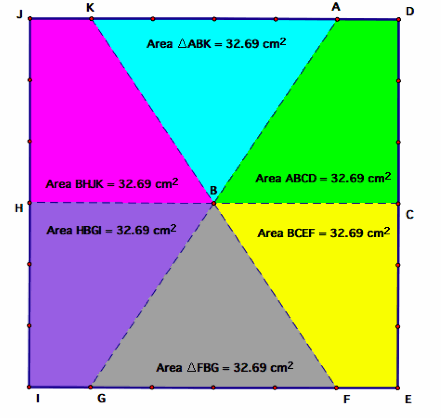
CUTTING THE CAKE
By:
Katie Gilbert
Problem: We have a square cake (that is, its horizontal cross-sections are congruent squares). It is frosted evenly on the four sides and the top. How can we cut the cake into n pieces so that all the pieces have equal amounts of cake and equal amounts of frosting? Hint: What if the cake is a circle?
Source: Jim Wilson’s Problem Solving Website
http://jwilson.coe.uga.edu/EMT725/Bob2/SquareCake.html
Solution: Since the cake had uniform depth, as long as we divide the top of the cake into equal areas, thereby allowing each slice equal icing, we will also preserve equal volumes. And in order to maintain equal icing each slice has to have the same side length. So divide each side into n equal segments, where n is the number of desired slices. Choose a corner and slice the cake from the corner to the center. Then count 4 segments of length n and make a new slice to the center of the cake. Repeat until the entire cake is divided.
Example when n = 3.
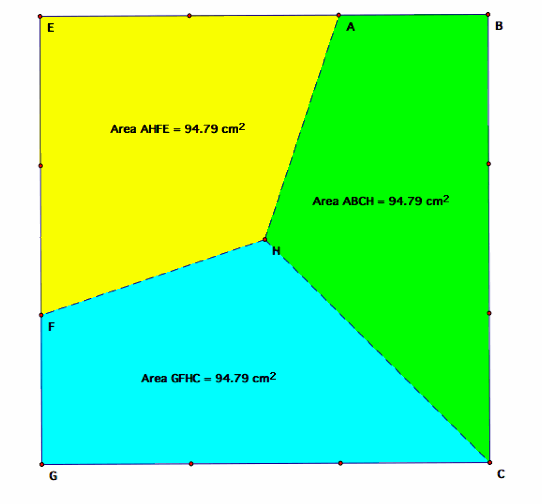
Example when n = 6.

Proof that areas are equal.........
Suppose the cake is to be divided into n equal pieces. Find the center of the square by constructing the diagonals and marking the center C.
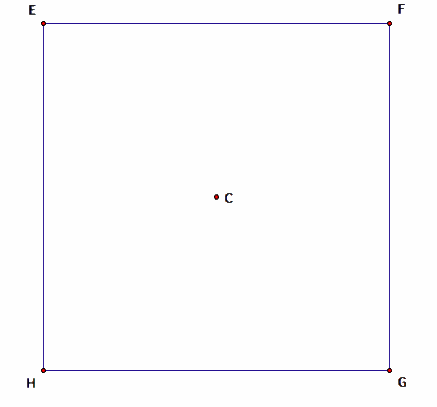
Divide each side into n congruent segments. Construct line segments from the ends of each segment to the center of the square.
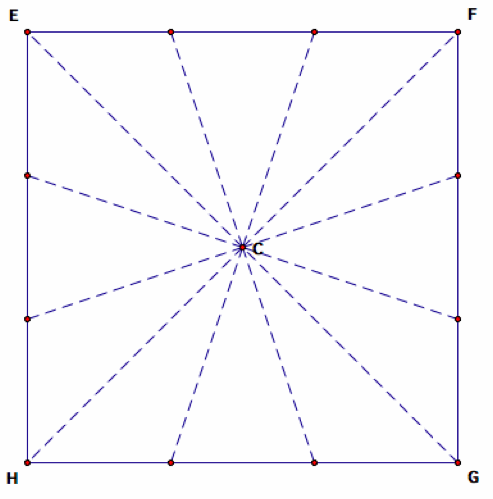
We can conclude that each of the triangles have equal area because each has the same altitude (a side of the square to the center), and by our construction, the base of each of the triangles are congruent. Since each slice is made up of 4 consecutive triangles, the areas of the top of the slices are congruent meaning each slice has equal icing on the top. And since each slice has the same side area, which is equal to the height of the cake times 4 of the congruent segments, each slice has equal icing. And since the top of each slice has congruent area and the cake has uniform depth, then the slices have equal volume. Therefore each slice has equal amounts of cake and icing.
One then might wonder would he process be the same for a cake that is a shape other than a square....What if the cake is in the shape of a regular polygon other than a square?
Example of 5 sided cake divided into 3 slices.
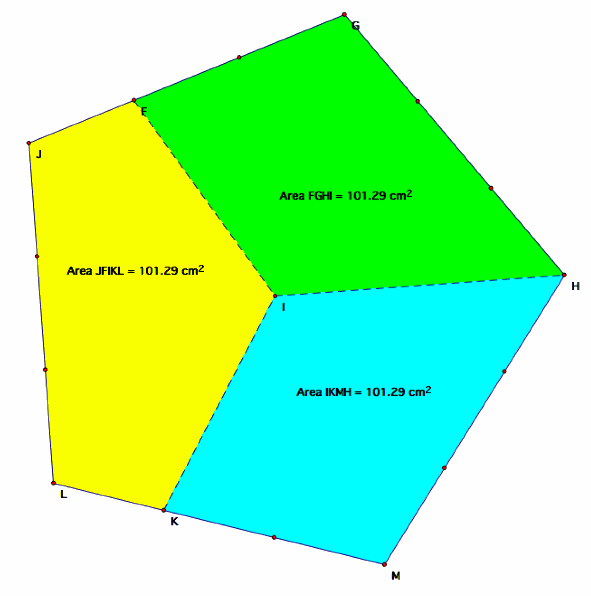
We again found that we can follow the same algorithm as above, by dividing each side of the cake into n equal segments, n being the number of deired slices, since the cake has uniform depth and as long as we divide the top of the cake into equal areas, thereby allowing each slice equal icing, we will also preserve equal volumes.
Another question that arises is............Does the thickness of the icing matter?
Let's take a look at a GSP image of a cake with extra thick icing and see what we find....
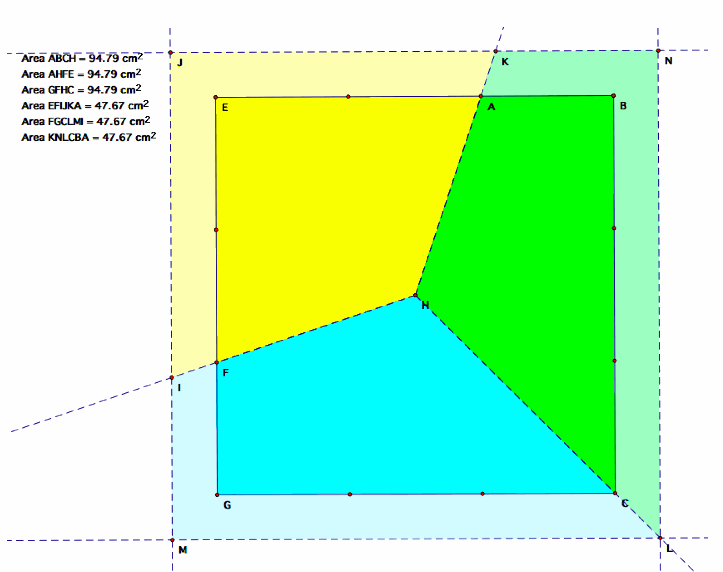
What we find here is that the thickness of the icing does not matter.